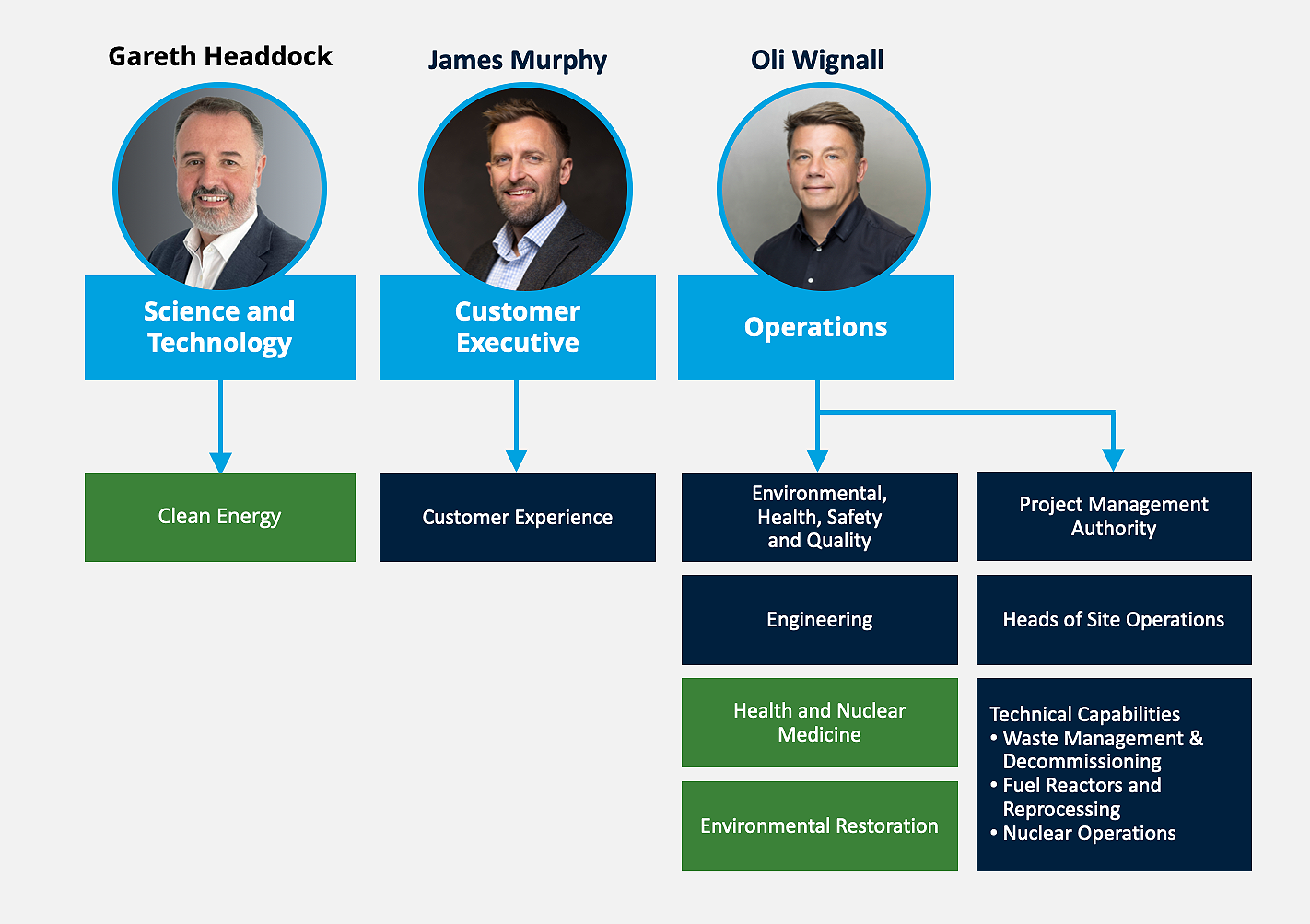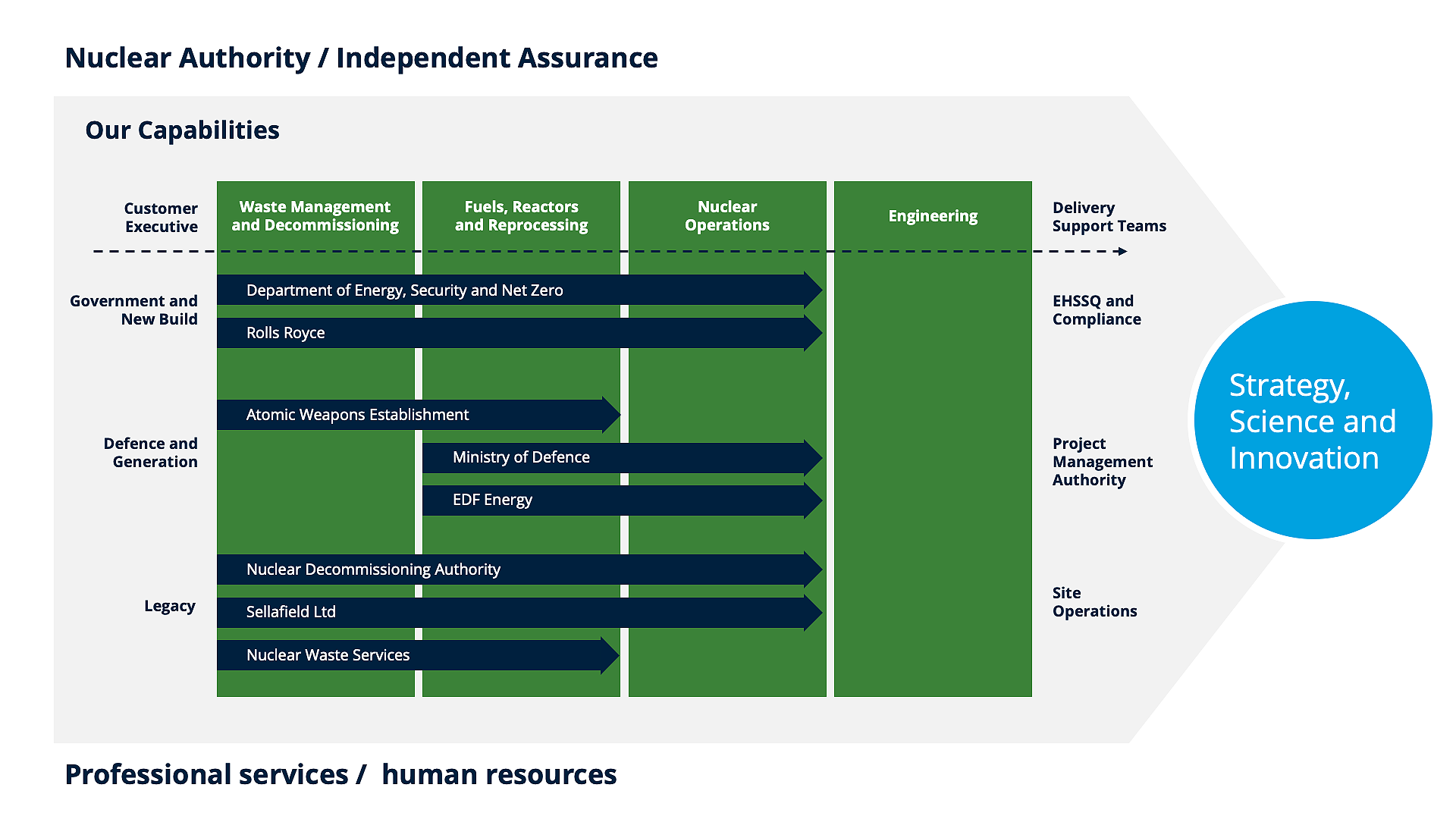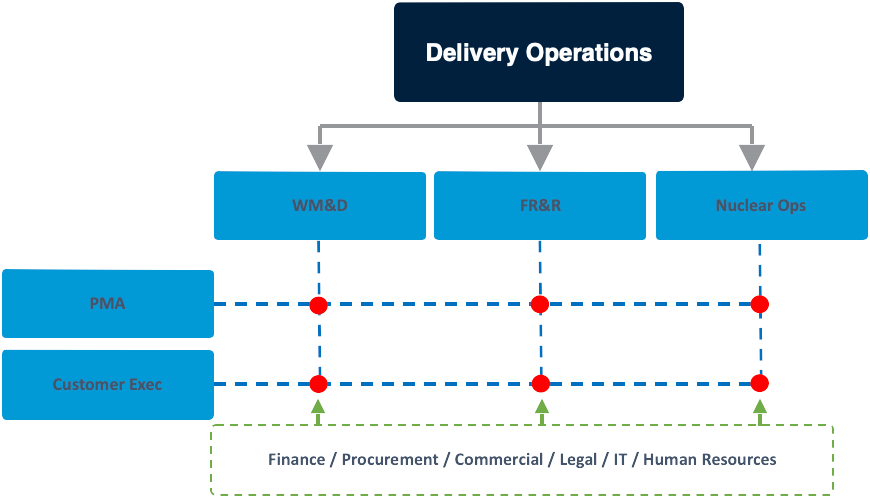
Introduction
Science and Technology
Science and Technology (S&T) are – and always have been – the beating heart of UKNNL. Our investment in research to drive forward nuclear science is fundamental to our work as a national laboratory and core to our purpose.
UKNNL’s S&T Agenda was launched to support our Strategic Plan and purpose - nuclear science to benefit society.
Our S&T investment will enable the creation and delivery of key scientific outcomes that will benefit both UKNNL and the nuclear industry as a whole.
The S&T agenda will:
- enable successful delivery of customer programmes.
- create global thought leadership about nuclear technology.
- support government and shape the future nuclear agenda.
- create new ideas, approaches, and services that enable successful implementation of UKNNL strategy.
- deliver successful partnerships, nationally and internationally
- enable UKNNL to be the custodian of nuclear fission talent and critical national infrastructure

UKNNL Fellowship
Our UKNNL Fellowship is formed of a group of outstanding role models who play a key role in delivering our Strategic Plan and Science & Technology (S&T) agenda. The Fellowship is made up of science, technology and engineering leaders who are nationally and internationally recognised for their leading expertise and influence in their specialist fields.
Read more about this inspiring group of people on the Fellows page on Nucleus.

How we deliver our work
Our Delivery Operations team maximise value to our customers by providing tailored technical solutions, ‘ready for service’ capabilities and a top-class end-to-end project delivery experience. Watch this video from Nick Hannigan, Special Advisor and Des Wright, Chief Nuclear Officer and Senior Information Risk Officer, discuss some of the work we carry out for our customers.
How we deliver our work
The diagram below shows how we organise the requirements of our customers (blue arrows) through project portfolios to recognise the varied technical expertise and complex environments in which they operate.

Customer Experience
Customer experience aims to create insight, opportunities, strategies and relationships to deliver true customer intimacy.
Capability Areas
Our capability areas provide the technical specialist expertise required to deliver our work.
Delivery Support
Our project management, compliance and site operations teams provide expertise, focus and consistency to ensure work is delivered safely and to the expected quality, within timeframes and the agreed budget.
Our Customer Experience Team
Our Customer Experience (CE) team is the focus for customer relationship management in the business. Everybody in UKNNL has a part to play in achieving meaningful relationships with our customers built on trust and the CE Team focuses on managing this relationship.
The function consists of externally facing Account Directors and the Customer Intelligence team, who report into Vice Presidents. Our team of specialist Bid Managers sit in the Customer Intelligence team.
The team are responsible for:
Business generation
The Account Directors work to better understand our customers' requirements, their future business and mutual longer-term needs. By understanding this more closely, we can deliver more effectively and identify what is of real value to our customers. Through good, reliable delivery and proving value we will generate new business.
Customer relationship
As well as identifying new work from our customers, the Account Directors have an overview of what is being delivered to support a consistent, positive, experience for the customer. They are the escalation route for relationship issues. Good relationships are built on trust and the CE team helps us to co-ordinate our efforts from a customer viewpoint.
Customer intelligence
While everyone within UKNNL has a part to play in Customer Relationship Management, CE gathers information from inside and outside our business and uses this 'intelligence' to support our business ambitions, develop our relationships, and form ideas for new business.
Bid management
When a new piece of work is identified as being of 'strategic' value to our business, the CE team will work to position and develop the offer to the customer; ultimately this will usually end in a bid. The bid team manage these bids for new work and provide support to others in the business to prepare effective proposals.
Customer Executive Business Areas
The Customer Executive portfolio covers three key business areas:
Government and New Build
The Government and New Build business area is key to the advancement of the initiatives associated with net zero.
Work with the government for advanced fuels for the next generation of reactors is essential for the realisation of these ambitions and development of high heat generating Advanced Modular Reactors (AMRs) with our Japanese partners opens up the possibilities of other technologies such as hydrogen generation that require high temperatures.
Work for New Build and in particular Small Modular Reactors (SMR’s) has taken on a new dimension in recent years as a lower-cost alternative for nuclear power generation. Whilst, to some extent, these technologies are in early stages of the readiness cycle, UKNNL are working with multiple vendors to progress the technology so that it can be deployed at the earliest possible date
Defence and Generation
This business area is important for UKNNL and brings in significant long-term revenue.
The Defence part of the portfolio involves working with Rolls-Royce and the Ministry of Defence (MOD); ensuring that the nuclear submarine fleet are fit for service and support continual defence at sea by undertaking Post-Irradiation Examination (PIE) work for the submarine reactors. We are also involved in the development of the fuel manufacturing cycle required for future submarine programmes. Beyond their useful life, UKNNL supports the sustainable submarine disposal programme.
UKNNL support Atomic Weapons Establishment (AWE) reducing the hazard profile from their decommissioning and regeneration programme.
Work with EDF is crucial to the life extension of their nuclear fleet in the UK and ensures that the “lights are kept on” whilst the net zero future is being established. Eventual new stations such as Hinckley Point C will require critical PIE work from UKNNL for ongoing activities.
Legacy
This business area represents just under half of UKNNL’s overall customer revenue and covers key customers such as; Sellafield Ltd, the Nuclear Decommissioning Authority (NDA) (including wider NDA estate), other UK waste management & decommissioning customers, international customers (Japan, US, Europe) and UK grant / leverage opportunities.
The wider NDA estate (including Sellafield Limited) represents UKNNL’s largest customer. We have a long-established and important relationship with the NDA and its operating companies. In addition to the work for Sellafield Ltd, UKNNL provides a range of services across the estate with a particular emphasis on the disposition of fuels and special nuclear materials.
Growth in work on the storage and management of Special Nuclear Materials (including Plutonium) across the NDA estate has been a notable feature of our portfolio of activity for some time and has strengthened the NDA’s position as our major customer.
Capability Areas
Our capability areas provide the technical and specialist expertise needed to deliver our work:
Waste Management and Decommissioning
Waste Management and Decommissioning (WM&D) provides plant support services, along with research and development covering:
- Processing of operational and historic wastes
- Management of liquid and aerial effluents
- Waste immobilisation of low level radioactive waste (LLW) and higher activity wastes (cementation, vitrification)
- Decommissioning
- Management of radioactive contaminated land
- Surface and geological disposal
- Waste behaviour and characterisation
- Waste packing and disposal
Find out more here:
Fuels, Reactors and Reprocessing
The FR&R capability consists of four capabilities providing technical support (commercial work, R&D, nuclear foresight & advice) to a wide range of customers including the UK government.
- The Radiochemistry capability specialises in conducting Pu science, advanced isotopic separation and characterising Special Nuclear Materials in a shielded glovebox environment.
- The Irradiated Materials capability undertake measurements, experiments and assessments of civil and defence post-irradiated fuel and reactor materials in Highly Active (HA) Cell environments.
- The Fuels capability specialises in fuel storage behaviour, advanced fuel development, HA Cell post-irradiation examination of spent fuel, on-site fuel inspection and plant corrosion behaviour.
- The Reactors capability provides expertise on reactor modelling, nuclear physics and data, measurement of irradiated graphite properties in HA Cells, graphite behaviour assessment and micro-structural analysis using advanced electron microscopes.
Find out more here:
Nuclear Operations
Nuclear Operations provides technical support to a wide range of internal and external customers, across four capabilities:
- Measurement & Analysis.
- Modelling
- Nuclear Safety, Security and Safeguards
- Plant Intervention
Find out more here:
Engineering
Engineering are the key enabling function from scientific theory through to being able to get ‘hands on’ a piece of equipment or a specific research and development project. The Engineering capability have a legal responsibility to ensure that all equipment is safe for all future users. The capability includes the following departments:
- Design
- Support to Manufacture
- Construction
- Commissioning
The projects covered include new build, research and development, existing Plant Modification Proposals, safety case substantiation and decommissioning.

How we deliver our work
Our capability areas provide the technical and specialist expertise needed to deliver our work. Oli Wignall, Chief Operations Officer oversees our capability areas - watch this short video to hear about what he thinks is unique about UKNNL and the work we carry out.
Delivery Support Teams
Our project management, compliance and site operations teams provide expertise, focus and consistency to ensure work is delivered safely and to the expected quality, within timeframes and the agreed budget:
Environment, Occupational Health and Safety, Security and Quality
Our EHSS&Q team is responsible for driving and embedding a health and safety, security and quality culture throughout all our work. The team partner with the business to provide timely advice, challenge and support for our delivery teams, ensuring operations are delivered in compliance with regulatory, host site and customer requirements.
You can learn more about the responsibilities and roles within EHSS&Q by reading Q-Pulse document IMS-OR-EHSSQ-001.
Find out more here:
Site Operations
Site Operations ensures the delivery of safe operations across all UKNNL sites.
Site Operations is highly collaborative, working with EHSS&Q and compliance to make sure operations and activities are carried out in accordance with regulatory and legal requirements; as well as working with capabilities and project management to deliver work to time, cost and quality.
All of our sites are unique and will have different roles and responsibilities depending on the nature of the work undertaken. You can learn more about your local Site Operations team by speaking to your Line Manager.
Project Management Authority
Our Project Management Authority (PMA) sits within the delivery operations business area, delivering both current and future work for UKNNL.
The PMA is a professional project management body that is trusted to deliver excellence. The team work to safely deliver value and outcomes for all our customers while sustaining our operating margin and aligning with professional standards in a continuous improvement environment.
Working in collaboration with all business areas, the team deliver projects for both internal and external customers, such as new and emerging technologies, facility improvements and upgrades, and internal investment projects.
We have an established UKNNL Delivery Lifecycle with clear deliverables, governance, and controls that supports our project teams to deliver projects from beginning to end.
Led by a PMA Lead Team, we are formed of project managers, project controls and project support and have a presence in all UKNNL facilities.
Find out more here:
Working in a Matrix Structure
We deliver our strategy and purpose through our projects and customer work. We use a matrix structure in which there is dual or multiple managerial responsibility.
In delivery operations, we have already explained that technical skill sets are aligned to capability areas, creating defined areas of operation.
There are two reporting lines in our matrix - one along capability and the other along project, or across all areas of our Customer Executive (CEXE), interacting with professional services functions and recognising the interaction with stakeholders at all levels of the business.
Other chains of command may be considered, for example due to geographic location or industry regulations.

The structure aims to maximise value and opportunities to all our customers through provision of tailored technical disciplines, ready for service capabilities and an end-to-end project delivery excellence experience.
The advantages of a matrix structure include:
- Project objectives are clear and balanced with all stakeholder requirements
- Project integration is achieved through clear communication, systems and work packages
- Efficient use of people, resources and expertise, as they can be shared between projects
- Development opportunities for everyone involved, encouraging work across functional lines
End of week checklist and further activities

.png)